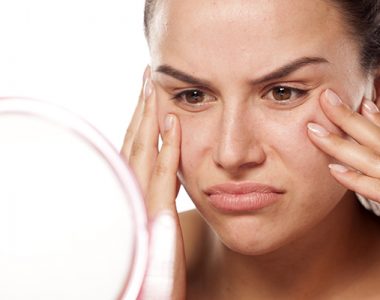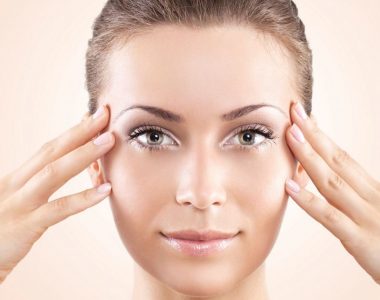
We truly understand that white spots on the face can be irritatingly devastating. Be it patches of depigmentation, the small blotches, or all of the different forms they come in. The good news is there are many proven and efficient treatments carried out through top skincare products that can cure all of your major insecurities regarding your skin. We, at drugs99.com provide you top exclusive skincare products ranging from acne, anti-aging, anti-fungal, eczema and psoriasis, scars and wounds, sunscreen lotions, vitiligo creams to best skin lightening creams for hyperpigmentation. Have them all today at best prices available!
White Spots On Skin
There are many types of white spots. Before you start any skin care treatment you need to burn some midnight oil and research thoroughly identifying what you’re suffering through precisely. After that, have a skin test on time and follow the guidelines as directed by your dermatologist.
What Are White Spots And Their Types?
White spots on the skin reflect when skin proteins or dead cells get trapped under the surface of the skin. This may occur as a result of depigmentation or color loss.
Idiopathic guttate hypomelanosis, also known as sunspots are white spots where skin pigment has been lost. These spots are 1–3 millimeters (mm) in size and tend to appear first on the legs before spreading to the neck, upper back, and face.
Another condition is Milia. Milia grows when keratin gets trapped beneath the skin. Keratin is a protein that forms the outer skin layer. That causes tiny white-colored cysts to develop on the skin. This disorder occurs most commonly in children and adults but is often seen in newborn babies. When trapped keratin causes white spots it is called primary milia. But, as a result of a burn, sun damage, or poison ivy, these tiny white cysts may also form on the skin. Cysts may also develop following a skin resurfacing procedure or after a topical steroid cream is used. Milia can grow around the eyes, on the cheeks, nose, forehead. Some people make cysts in their ears, too.
Pityriasis Alba is a form of eczema which causes the appearance of a flaccid, oval patch of discolored white skin. This skin condition affects about 5 percent of the world ‘s children, mostly between the ages of 3 and 16.
Tinea versicolor spots may look scaly or dry and may vary in color. Many people grow purple, red, or brown spots with this condition and others grow white spots. White spots may be unnoticeable until your skin tans if you have lighter skin. Often known as pityriasis Versicolor, it is a skin condition caused by yeast overgrowth. Yeast on the skin is a common form of fungus but it can cause rash in others. This skin disease may occur in people of all ages, but it generally affects humans living in humid environments as well as those with oily skin or a weakened immune system.
Vitiligo is one major cause that leads to face depigmentation and white patches. This blog tends to discuss Vitiligo skin condition in length as it is the most common widespread disease and everyone needs awareness pertaining to what it is, its causes, and its remedies. Here we go!
What Causes White Spots On Face? – Vitiligo
The general population ‘s chance of developing vitiligo is around 1 percent or 1 in 100 men. This is truly normal. The prevalence of juvenile diabetes is around 0.2 percent, or 1/500, compared to 0.1 percent, or 1/1000, multiple sclerosis. Since vitiligo is so popular and noticeable, when you are in big crowds, you would see many people with it, just like at city fairs (a favorite time in the fall). But, you sometimes catch yourself staring, and then feel bad because that’s one of the biggest concerns of vitiligo patients have – the acceptance. Vitiligo affected people are often taken as abnormal human beings as they embrace white patches on the skin.
The fact that vitiligo is more prevalent in members of the family with vitiligo suggests that genetics play a role in the illness. That’s not too shocking, because biology plays a role in most disorders, as well as natural traits (such as height, hair color, etc.). Ultimately, it’s important to note that biology isn’t the entire story of vitiligo. Environmental conditions, and likely chances, each play an essential role. The identical twin of a person with vitiligo also has a 23 percent chance of contracting the disease, while almost all of their DNA is the same. If genes were the entire story, the risk would be 100 percent (as with, for example, cystic fibrosis). Let us understand the scientific reason behind developing Vitiligo.
What Causes Vitiligo?
Vitiligo develops when some skin cells called melanocytes stop producing melanin. Melanin is the pigment that gives your skin, your hair, and your eyes color. White patches form without the pigment. These patches can appear anywhere on the body. Vitiligo is typically symmetrical, but it can only occur on one side of the body.
Hearing comments like, “See there’s one-half foreigner crossing the path might be heart-wrenching.” Vitiligo is a disease that causes skin patches to lose their color from parts such as your mouth, hair, and eyes, and is more noticeable in people with dusky complexion. It is believed that vitiligo starts developing when antibodies that destroy melanin are produced in the body. People need to understand that Vitiligo is a serious skin condition that leads to depigmentation on the skin and there is nothing so funny about it.
Don’t worry, we are here to make your skin smile happy wide rather than passing lame comments.
Being a non-contagious disease is an autoimmune condition that can not be cured for a lifetime. But surely, there are treatments that improve your skin condition to a greater extent. The type of treatment will depend on your age, the amount of skin discoloration, and the rate at which it spreads. We, at drugs99.com beauty store have collected a range of top skincare products that can please your vitiligo skin condition and bless you with an even skin tone.
Medications To Make Vitili-Go Away
Benoquick 20% Cream Monobenzene
Benoquick 20% cream Monobenzene works as a magic spell that shoos away your widespread Vitiligo. This cream adores you with the desired pigmentation and takes away all of your unwanted whitening. Let this super effective topical medication be at your service.
Melgain Decapeptide lotion
Melgain decapeptide lotion contains decapeptide which is the first peptide peptide-based drug that is used as a curative measure to cure vitiligo and bring back the desired re-pigmentation on skin. its unique formula enhances the process of re-pigmentation and inhibits the growth of micro-organisms that causes discoloration.
Benoquine Cream Monobenzene 20%
Being one of the most popular treatments for curing Vitiligo, Benoquine Cream Monobenzene 20% helps gift the required skin shade to patients suffering from depigmentation. It controls the melanin production in our body and beats away micro-organisms causing discoloration. It is better to treat Vitiligo at the early stages as it takes no time to spread all over the body.
Also, we have kept aside We have kept aside BRITE Hydroquinone 4 cream 20g, Eukroma cream (Hydroquinone 4 %), HYDE Hydroquinone 5% Solution USP Topical, Hydroquinone Eukroma Lite cream, Tri-Luma Cream, TRI O BLOC Cream and Skinlite cream as our top-notch treatments for skin pigmentation and shedding away all of your dead skin cells. Shop your heart out today at drugs99.com.




















